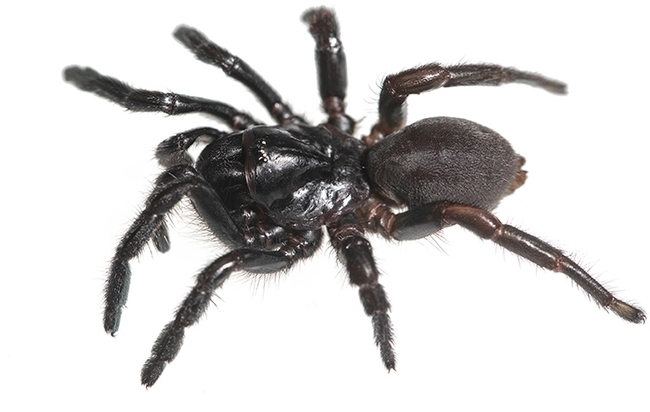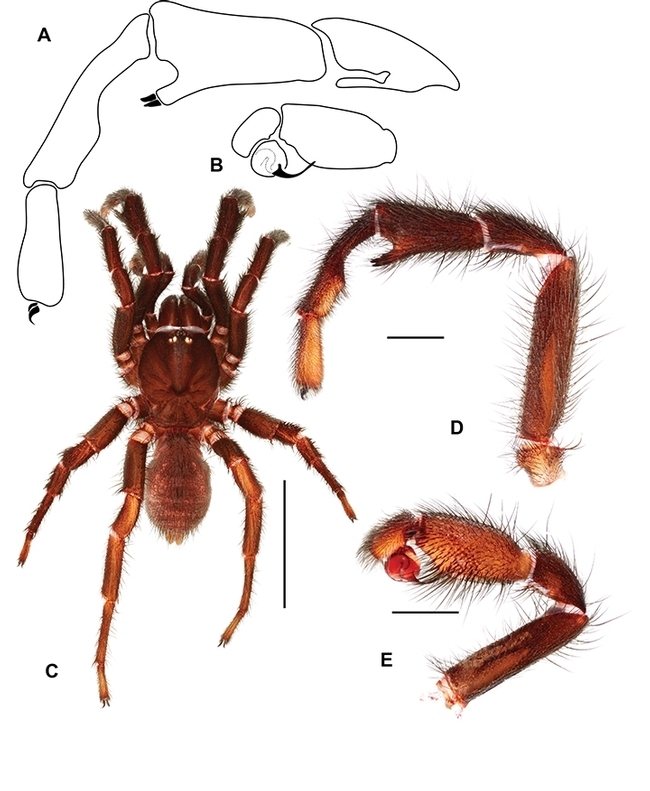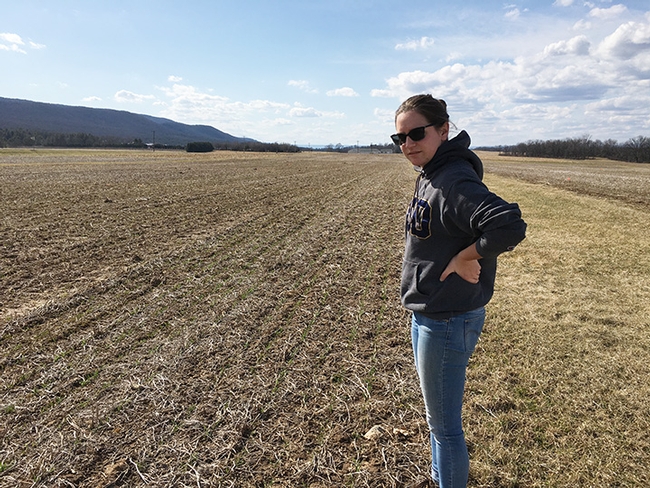
The contest, beginning in mid-May and ending June 1, drew more than 200 suggestions from all over the world.
Entomologist Kirsten Pearsons, an alumnus of UC Davis who received her doctorate in entomology in August from Pennsylvania State University, submitted the winning name, “kawtak.”
So it's official: the trapdoor spider--or what Bond calls “the new endangered living fossil found on a sandy beach on a seashore along California's central coast"--is Cryptocteniza kawtak.
“The derivation of the specific epithet is Native American – from the Mutsun word for seashore,” said Bond, a noted spider authority and the Evert and Marion Schlinger Endowed Chair in Insect Systematics, UC Davis Department of Entomology and Nematology. The Mutsun Indians lived near Mission San Juan Bautista.
In a forthcoming scientific journal article on the spider's phylogeny, evolution, biogeography and discovery, Pearsons will be credited with naming the species.
“There were a lot of names proposed,” Bond said. “They fell into a few general categories: 1) named after me – people apparently like my last name and the association with the James Bond character but naming a spider after one's self would not be good form; 2) Native Americans, particularly California indigenous groups; 3) location (Moss Landing) and/or physical description; and 4) names related to the recent Black Lives Matter protests and movement and George Floyd.”

“I have also named other California spiders in the past for Native American groups and feel strongly that such new species names are an elegant connection California, to the land and its native people, “ Bond said.
The UC Davis professor said the Cryptocteniza kawtak is “morphologically distinct and geographically isolated from other related genera, with its closest phylogenetic relatives found much further to the east in New Mexico and Arizona.”
Trapdoor spiders are so named because they construct their burrows with a corklike or wafer trap door made of soil, vegetation and silk.
Bond discovered the female spider in 1997, and figured at the time it might be a new genus. But despite repeated trips to the site, he could not find a male for 22 years. The male proved elusive until pitfall trap sampling in the fall of 2019.
It is rare to find a genus in the field, the professor said. The usual place is in museum collections.
Bond believes the genus is found only in that area, but thinks it may be closely related to a genus found in New Mexico and Arizona. “It is quite plausible that this genus was once likely far more widespread across California and the American Southwest, with potentially greater past species diversity throughout its larger hypothetical ancestral range,” he said
In their journal article, the five-member team reconstructed the spider's evolutionary history: its extinction following the Miocene epoch, 23.03 to 5.3 million years ago and the establishment of a Mediterranean climate. “Owing to its phylogenetic distinctiveness, incredibly narrow distribution and age, we show that Cryptocteniza meets all the criteria of an ‘Endangered Living Fossil' and is consequently of grave conservation concern,” Bond said.
The other three co-authors are Bond lab members, doctoral student Rebecca Godwin and project scientist James Starrett; and Joel Ledford, an assistant professor of teaching in the Department of Plant Biology, College of Biological Sciences. Ledford interview Bond on May 18 for his Tree of Life-UC Davis YouTube channel. (Watch it online.)
The group opted for no public vote on the spider name, as it might result in something similar to “Boaty McBoatface,” the winner of a contest to name a British polar research vessel.
Of the genus name, Cryptocteniza, Bond says that the adjective “hidden or secret” is prefixed to Cteniza, the Greek feminine noun “comb.” The latter refers to the comb-like rastellum (row of stiff spines on the chelicera) common in taxa and formerly assigned to the spider family Ctenizidae (e.g., Eucteniza). The prefix refers to both the diminutive form of the rastellum and the seemingly “hidden in plain sight” nature of the genus, he says.
Bond credited Vera Opatova, a postdoctoral fellow in his lab, with helping to formulate the genus name.
Pearsons said that when she proposed the name, this is what she wrote: "Kawtak means "on the seashore" in the Mutsun language. Before the Spanish arrived, the moss landing area was home to the Mutsun people (http://amahmutsun.org). Today, tribal members and linguists are working to revitalize the Mutsun language, so this could be a small way to recognize this effort and to recognize their ties to the Monterey Bay. Also, it just sounds nice following the genus name!"
For her doctorate, Pearsons (she studied with major professor John Tooker at Penn State), explored how pest management affects arthropod decomposers and decomposition in field crops. She received her bachelor of science degree in environmental toxicology in 2015 from UC Davis.
At UC Davis, Pearsons served as a peer advisor in the Department of Environmental Technology for nearly two years. She also worked in the summer of 2014 as a student intern in the UC Davis Department of Entomology and Nematology's bee garden, the Häagen-Dazs Honey Bee Haven on Bee Biology Road.
Attached Images:

This is the female of the species,Cryptocteniza kawtak. (Image by Jason Bond)

This is the male of the species, Cryptocteniza kawtak. (Image by Jason Bond)

This is where UC Davis Professor Jason Bond discovered the new genus and species of a trapdoor spider. (Illustration by Jason Bond)

UC Davis alumnus Kirsten Pearsons, a "proud Aggie," surveys the Russell E. Larson Agricultural Research Center at Rock Springs; this is Penn State's research farm. She holds a doctorate in entomology from Penn State.